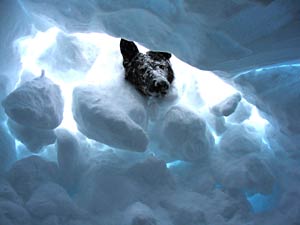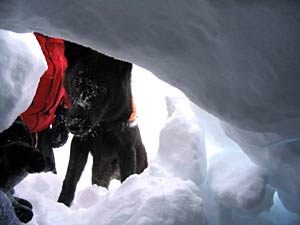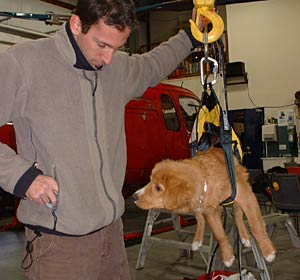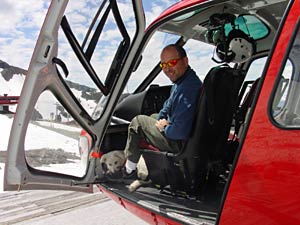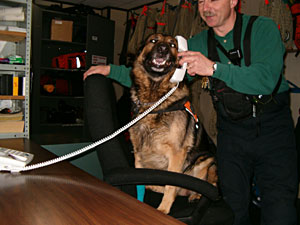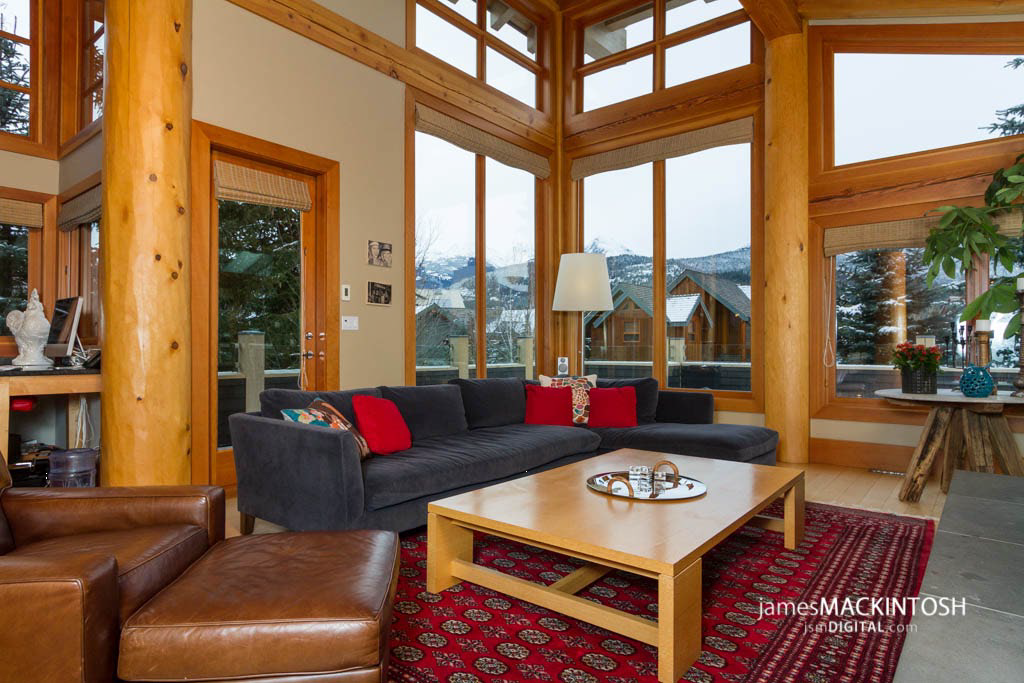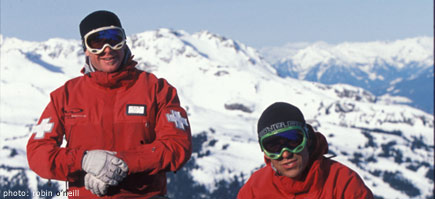
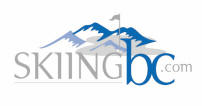
|
1-877-88-SKIBC(7-5422) UK 0-800-028-9858 Mexico 1-888-584-7198
|
Check Availability Now!
|
|
|
|
|
Whistler
Reservations Call Now |
08-4557 Blackcomb Way Whistler, B.C

Safety On the Mountains
Alpine Responsibility
The Alpine Responsibility Code
The points listed in the Alpine Responsibility Code are the rules of the road when you are on the mountain. The Mountain Safety Team, the Ski Patrol, and the Terrain Park Rangers will stop and let guests know when they are not following the code. Failure to follow the Alpine Responsibility Code could result in consequences ranging from a one-on-one Safety Awareness Seminar with a Ski Patroller to a lifetime suspension from Whistler Blackcomb. So take it easy out there. Give people some space.
Please respect all ropes, signage and ski area boundry markers. All may indicate possible dangers that may not be readily apparent. In particular, the snow making water resevoirs on both mountains are roped off from public access, clearly signed and should be avoided.
See the Alpine Responsibility Code in action - please contact our Sales Office at 604.932.3400 for details on how you can obtain a copy for viewing.
Back Country Travel
Safety doesn't stop when the snow melts. Please read our Hiking Tips to ensure a safe summer mountain experience.
Safe Travel
Before you go:
- Leave word with a reliable person regarding your proposed route and expected return time.
- Research the route and its hazards: known slide paths, cornices, cliffs, crevasses.
- Check the weather and avalanche danger. Have an alternative trip choice available.
- Consider group makeup; beacon compatibility, experience, fitness level and group size.
- You should carry and know how to use: an avalanche rescue beacon, a shovel,a probe or probe ski poles.
Recognizing Avalanche Terrain
Slope Angle - Dangerous avalanches are most common between 30° and 45°, ideal skiing, boarding or snowmobiling slopes.
Orientation to Wind - Lee slopes are a potential hazard because wind deposited snow often creates unstable slabs. Windward slopes generally have less snow, which is compacted and are usually more stable. In the absence of wind, slopes of any aspect may avalanche. Slope profile, orientation to sun and the presence of trees all influence avalanche potential and are topics covered in an avalanche course.
Travel in Avalanche Terrain
Avoid large, steep, lee bowls, gullies and cornices. Choose safer routes: ridge tops, valley floors, dense timber and low angle slopes. If you choose to ski, board or ride an avalanche slope, minimize your risk.
- Never have more than one person on a slope at any time.
- Don't stop in the middle of the slope, move to a safe place.
- Watch each person on the slope. Stay in voice contact.
- Have a plan: know who is going to go first, where to stop and where is the escape route.
Nature's Billboard
Do not ignore Nature's billboard. It's Nature's way of telling you when conditions are unstable.
|
Instability Message |
||
| Recent avalanches on similar slopes | There is no better clue! Avoid slopes of similar angles, aspects and elevation which have not yet released. | |
| Whumping noises | Whumps happen when a weak layer collapses within the snowpack. Nature is screaming at you! Avoid avalanche prone slopes and runouts. | |
| Shooting cracks | Shooting Cracks in the snow indicate that you can trigger slab avalanches. | |
| Recent wind loading | Wind loaded snow forms slabs. Evidence of wind loading includes cornices, smooth pillows of snow and drift patterns. | |
| A sudden warming trend | A rapid prolonged rise in temperature, particularly above freezing, may cause avalanches as the snow weakens. | |
| Hollow sounds | Drum-like hollow sounds from the snowpack as you travel indicate a potentially weak layer is underneath a denser layer. | |
| New snow | Most avalanches occur during or soon after periods of prolonged or heavy snowfall. | |
Remember, weather is the architect of avalanches. Coastal, Columbia and Rocky Mountain snowpacks and weather conditions vary greatly.
Free Helmet Campaign
Stop by and give a helmet a try. It might just be the confidence booster you need to learn new skills.
|
Rental Locations
|
Helmets For |
| Blackcomb Rentals Base II |
Youth & Adults |
| Whistler Kids Rentals Village Gondola |
Children & Youth |
| Whistler Kids Rentals Whistler Creekside |
Children & Youth |
| Whistler Kids Rentals Blackcomb Base |
Children & Youth |
| Quantities are limited. Don't miss out. | |
Stay in the Ski & Snowboard Zone
Following these 4 steps will help you maintain an injury-free lifestyle:
- Get in shape with pre-season exercises and proper training.
- Be honest in assessing your experience level. Don't try runs beyond your ability.
- Be aware of weather conditions and your physical environment - your relationship with your immediate surroundings.
- Keep a positive attitude and look for the unexpected. Wear the gear and be prepared.
Get Proper Training
Start a training regimen to get in shape. Learn basic manoeuvres from an instructor so that you can stay under control when turning and stopping on the slopes. Losing control, speeding and collisions are common causes of serious injuries. Make sure you know:
- How to get on and off the lifts.
- The Alpine Responsibility Code.
- The symbols indicating the degree of difficulty for ski runs.
Assessing Your Experience & Abilities
- Match the difficulty of the run to your abilities.
- Ski or snowboard with a friend and always stay in sight of each other in case of an emergency. The ideal number of people to ride with is three; one to stay with the injured person and one to go for help.
Physical Environment Check
- Be aware of your physical environment; know the snow conditions, the difficulty of runs and the weather conditions.
- Give others room to turn. Cutting into another person's path when turning can cause a collision. Yield to others when entering a ski run.
- Know where the run ends. Some runs lead to new areas away from the original starting point.
- Stay in-bounds. Know what's on the other side of a jumping spot. You don't want to find out too late that a drop you expected to be a few feet is actually forty feet.
Attitude Check
A positive mental attitude will help you look for hazards, stay in-bounds and choose the biggest run for your level of experience. Do you respond to peer pressure? Following a friend out-of-bounds could lead to serious injury.
Stay in the zone
and you'll have a great time.
The Free Helmet Campaign is a joint venture between The BC Injury Prevention Centre; Trauma Services, Vancouver Hospital & Health Sciences Centre; Louis Garneau Sports Inc.; Provincial Brain Injury Program; Sea to Sky Health Council and Whistler Blackcomb.
Mountain Safety
Our members are on the look-out for skiers and riders travelling too fast or displaying reckless behaviour. Normally, a verbal warning will correct fast and reckless issues, but on occasion, skiing and riding privileges are suspended.
Our mission is to ensure that all guests and employees are aware of the Alpine Responsibility Code, thereby making our slopes safer for all. You can help the Mountain Safety Team by skiing or riding in control, by travelling at the same speed as others in Slow Zones, and by using common sense and courtesy while on our mountains.
Common Questions
How can I tell that I'm in a Slow Zone?
There are a couple of ways. First of all, have a look at a trail map. The Slow Zones are highlighted in yellow. You will notice that most of them are beginner runs. When you are on the mountain look for 'Slow' or 'Slow Zone' banners. Most Slow Zone runs have 4 ½ foot high banners at the top with 3 foot high banners in between, which are drilled into the snow. These top banners will usually be installed in such a way as to force skiers and snowboarders to slow down as they enter.
How fast is too fast?
Many people have a hard time remembering what it was like to be a beginner skier or snowboarder, and having to worry about whether there is enough space to attempt a turn. So first off, think about giving people some space. Next, remember that you must always be in control whether you are on an expert run or in a Slow Zone. This is the first point of the Alpine Responsibility Code. If you are in the air, you have no control over your speed or direction. Jumps and hits are not allowed in Slow Zones. The speed expected is relevant to how many people are on the run. If there is no one on the run, you may do short radius turns. When there are more people on the run the 10% Rule is in effect. You may pass people at a speed approximately 10% faster than the flow of other skier traffic on the run.
Why can't I go as fast as I want when there's no one else on the run?
The Slow Zones are on beginner runs. One of the biggest users of Slow Zones are kids. Kids don't have a high awareness of what other people are doing and are easily distracted. They might be on one side of the run and see something that they want to take a closer look at on the other side and just veer over and cross the run without checking to see if anyone is coming. Kids and adults that are learning to ski also tend to fall on terrain transitions (knolls) and can be trying to recover from a crash in an area that can't be seen from above.
Avalanche Dogs
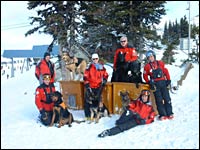 The Canadian Avalanche Rescue Dog Association (CARDA) was founded in 1978. The organization is dedicated to saving the lives of avalanche victims through the use of highly trained dog and handler teams. Made up of volunteers who have passed an intensive training program, CARDA strives to maintain a network of efficient avalanche search and rescue dog teams in Canada.
The Canadian Avalanche Rescue Dog Association (CARDA) was founded in 1978. The organization is dedicated to saving the lives of avalanche victims through the use of highly trained dog and handler teams. Made up of volunteers who have passed an intensive training program, CARDA strives to maintain a network of efficient avalanche search and rescue dog teams in Canada.At present, Whistler Blackcomb is proudly represented by thirteen avalanche dogs and their handlers. The dogs work full or part time, depending if their handler is a professional or volunteer patroller. The teams have a range of experience, from puppies entering the first stages of training to dogs with years of experience. Their names are Burleigh, Finna, Norah, Quest, Zhiggy, Haole, Lexy, Kally, Koda, Mac, Gracy, Kaya and Hector.
The dogs and their handlers develop a powerful bond through ongoing, rigorous training exercises based on a system of reward for tasks successfully performed. Although it is a disciplined relationship, the feeling of love and friendship between the dogs and their handlers is immediately evident - they are a team.
